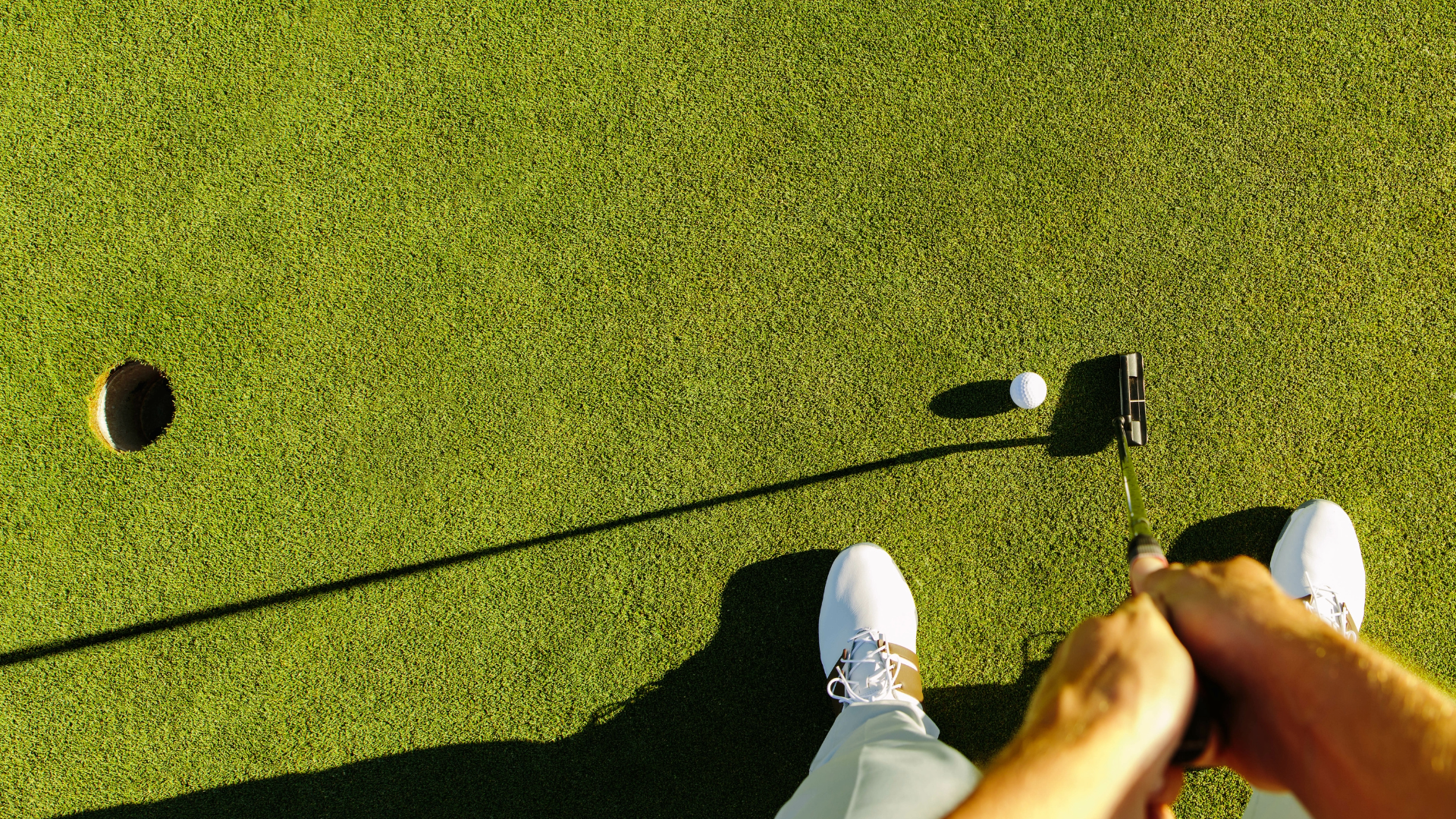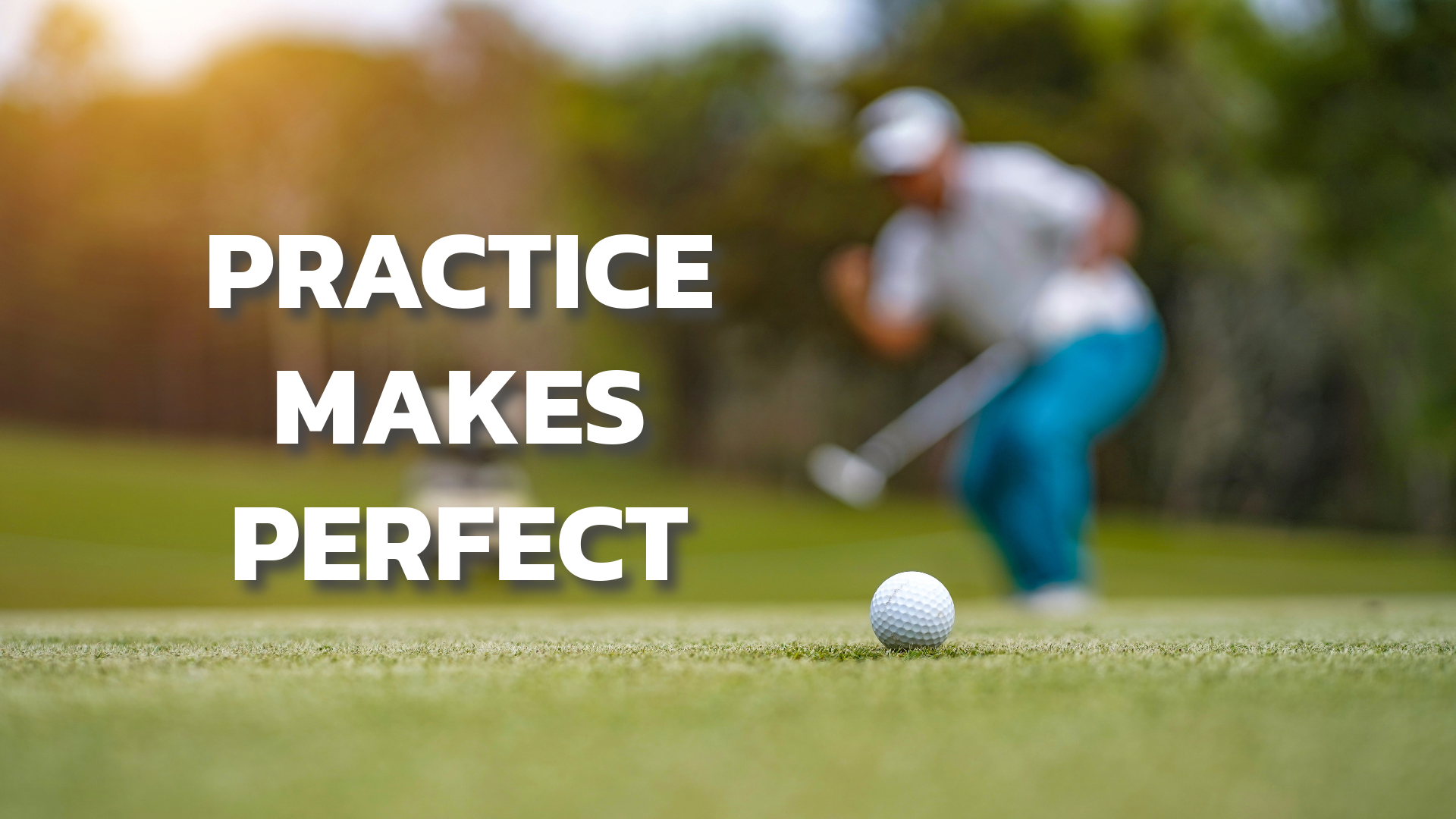
Is there anything worse than a bad day putting?
Let’s face it; few things are as frustrating as hitting the golf ball well, only to find yourself struggling on the green. A lackluster putt can easily spoil a promising round, turn a tough round into an even bigger challenge, and possibly even lead to a slump.
Today we’ll reveal seven of the best putting tips so you can get your confidence back with your flat stick.
7 Game-Changing Putting Tips
What’s ironic is that putting should be so much easier than the golf swing. A putting stroke is not happening at 100+ mph and sometimes it’s a matter of feet to get the ball in the hole.
Arnold Palmer might have said it best when he said “Putting is like wisdom – partly a natural gift and partly the accumulation of experience.”
We’re here to share some expert wisdom, so you can turn your putter into a weapon on the golf course.
1. Use the Proper Putter
Before getting into the best putting tips, let’s first start with your putter itself. When it comes to choosing the right putter think about the following three things:
- Length: The length of your putter is one of the most important parts of this club as it impacts your eye position over the golf ball and posture. If a putter is too long, you might not get your eyes over the ball correctly which can negatively impact your start line. If a putter is too short it can hurt your posture.
- Style: The right style of putter – mallet or blade – is largely a personal choice but also depends on your stroke. If you’re a golfer who has a more straight-back putting path a mallet is likely the better option. These types of putters are also more forgiving and oftentimes easier to line up, but a blade putter is a good choice if you have a more in-to-out path and prefer a traditional look.
- Grip: Finally, always consider the type of putter grip too. Some golfers prefer thin grips while others prefer midsize or jumbo “fat” grips. Bigger grips can help with lighter grip pressure but also minimize wrist action. Always move up grip sizes gradually as it’s very challenging to go back from a jumbo to a normal-size putter grip.
Try out different styles and lengths of putters at a local golf store or invest in a custom putter fitting. A fitter can also help adjust your current putter’s lie and loft angle for an optimal roll.
2. Discover Your Putting Style
Once you have the right putter it’s time to lean into your personal style of putting.
Unlike the full swing, there isn’t a “right way” to putt. If you watch some of the greatest players ever you’ll notice they all have a variety of grips, postures, ball position, and stances.
The first thing to consider is your grip – the most common types are reverse overlap, cross-handed, and the claw. According to Golf.com, a conventional grip is the most popular on the PGA Tour and is used by players like Tiger, Rory, and Jason Day.
As noted in the article, “The most common grip on tour is the conventional, reverse overlap golf grip. It’s a slight variation of the same grip you use for your full swing, and helps the hands work together with less wrist hinge.”
The second most popular grip is cross-handed aka left-hand low. This position removes the dominant hand which is great if you have overly active wrists. Jordan Spieth has found a lot of success with this and is gaining popularity with all types of golfers.
Other players use a claw grip and some guys prefer an armlock-style putter. Some players even choose a “heads up” putting method where they look at the hole, not the golf ball (not something we recommend).
The point is to find what works for you and feels the most natural. All that matters is you square the putter face up at impact for a solid strike – regardless of your posture or grip.
“Putting is like wisdom – partly a natural gift and partly the accumulation of experience.” – Arnold Palmer
3. Speed Up Your Green Reading Routine
Once you have a go-to putter and know your style, it’s time to master a green reading technique. If you can’t read greens properly, no putting tip post will help you make more putts.
Our biggest green reading tip is to trust your gut instinct on your initial read, as it’s right most of the time. Take a look, go with your gut instinct, and putt. You’ll learn as you go.
The best strategy for golfers is to read the green from behind the golf ball and only read from other angles if you can’t figure out the break. This will help avoid confusion on the break of the putt, commit to the line, and also speed up play.
Keep your green reading routine as simple and quick as possible.
4. Fix the Fundamentals
We saved fundamentals for our fourth putting tip because the first three are so crucial to success on the greens. If you don’t have a ton of confidence in your putter, style, and ability to read greens even a perfect stroke won’t help you make putts.
When it comes to putting fundamentals here are two non-negotiable items.
- Keep your head down. Professional golfers keep their head down and only look up to see the putt once the ball is well on its way to the hole. While amateur golfers tend to look up quickly as they want to see the ball go in. But if you peak too early, you’ll alter your stroke which can lead to a lot of pushed putts and misses to the right.
- Accelerate through the putt. Another common mistake among the everyday golfer is a deceleration at impact – which happens from too big of a backstroke. Phil Mickelson shared some great advice in his “Secrets of the Short Game” series and said to think about short putts with a 25/75 ratio. The backstroke should be 25% of the length of the putt with the forward stroke the other 75% to ensure you’re accelerating through the putt.

5. Design a Pre-Shot Putting Routine
Another common trait among elite putters is a solid pre-shot routine. This comprises mainly of two components – the physical routine of taking the grip, starting your stance, etc. The second is the mental preparation – reading the green and deciding on your line.
A good routine will allow you to prime your mind for any length putt. It will help you stay out of your way mentally and help you make more putts… especially under pressure.
During your next practice session, create your putting routine if you don’t have one already.
Like the putting stroke, there is no perfect formula when it comes to a good routine. Every golfer has variations – some take practice strokes next to the ball (like Tiger) while others take them perpendicular to the putt.
Experiment in practice with different parts of the routine to see what produces the best results.
6. Practice More Frequently
One of the best putting tips is to simply spend more time on the greens (or buy an indoor putting mat for your house). Most golfers spend all their practice time on the driving range and only a few minutes on the putting green before the round.
Instead, get to the putting green before and after your range session to not miss out on practicing such an important part of the game. The sooner you do, the sooner you can break 80 and maybe even become a scratch golfer.
Here are some helpful tips for having an efficient putting practice session:
- Focus on 3–6 footers. These are the most crucial distance putts to make on the course for par saves and keep the round-headed in the right direction. Even if you have an off day in terms of ball striking, being a clutch short putter can help salvage a decent score. And convert a great day of ball striking into a low score.
- Use training aids. A putting mirror, chalk line, or putting gates can help make your practice session much more helpful. Start the session with these aids to get the fundamentals and not develop any bad habits.
- Practice your routine. Once you have a consistent routine take one golf ball and putt 9 or 18 holes using your full routine. Hit from varying distances (3-50 feet) to simulate a round of golf and try to not three-putt. This will help get your timing dialed in so it will be perfectly timed on the course.
If you need a great drill and a quick overview of putting basics, you’ll love the video below.
7. Learn to Let Go on the Green
The final putting tip is on the mental side – disconnect from the result.
Too many golfers stand over a putt “hoping” and “wanting” a putt to go in the hole. Others worry more about what will happen if they miss the putt – especially shorter ones you’re “supposed” to make.
But this can take away your focus on the routine and target to ultimately hinder performance. World-class putting coach and author Dave Stockton explained this concept perfectly in his book, Unconscious Putting.
“The goal is to disconnect from the consequences of any putt and spend all of your energy on visualizing the putt going in, using the same process every time. Once you’ve done that, you’ve done all you can do.”
If you’ve done the first six putting tips – now it’s time to let go and simply putt. Don’t worry about what will happen if you don’t make it – it’s all part of the process.
The Final Putting Thoughts
Putting is more of a mental battle than anything else. While the fundamentals are important, once you have a consistent stroke it comes down to having a good routine and a positive mindset.
If your putting still needs a little help, you might want to try the SQ Putter, the #1 “Straighter Stroke” Putter For Amateur Golfers. Available in both blade and mallet options, this expertly designed putter and its patented dual pistol grip can help you achieve a straighter stroke and square face at impact.
Eliminate your 3-putts with its “straight back and straight through” design! Learn more about the SQ Putter here.
Or, check out Scratch Club for your all-access pass to improve the six most important areas of your game.

